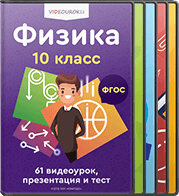
Project “My small Motherland”
Made by the students of form 7b
Kartashova Julia
Stepanova Anastasiya
Teacher: Abramenko I.A.
Bolshaya Orlovka, 2017

“ There is no place like native village ”

Bolshaya Orlovka is situated in Rostov region, Martynovskiy district

About the history of my native village
In 2012 our village celebrated its 225 birthday. It ’ s an advanced age!

The founder of Orlovka was the army ataman of the Don army
Vasily Petrovich Orlov
(1763-1801 гг )

The Birthday of Bolshaya Orlovka was set on the 15 of July in 1787. The document confirming this date is stored in the national archives of Rostov region.
"On the July 15, 1787, the military civilian government of the Don troops issued the decision to allow to Colonel Vasily Orlov to take place for the mill on the river Sal, over the Four steep banks, the mouth of Oblivskaya gully "

Vasily Orlov invites here people from the South of Ukraine, who used to live on the steppes. He promised "mountains of Gold"-
land and freedom.

So there was a settlement, called Sloboda (which means “ freedom ” ), where peasants were settled with special privileges.

On the 1st of February, 1918 the Don military revolutionary Committee announced the recognition of the Soviet government.

The Soviet authorities were formed in Bolshaya Orlovka in 1918. They were headed by Ilya Kovalev.

After the civil war Bolshaya Orlovka was still the part of the 1st Don okrug and remained the centre of the municipality. But in 1924 the volost was dissolved and the settlement formed the part of Semikarakorsky district , from March, 1929 in the part of the Konstantinovsky district , and only since 1934 Bolshaya Orlovka is listed in the Martynovsky district .

In the hamlet Niva the villagers organized the commune, where it was collectivized everything: cattle, poultry, houses, tools.

After the beginning of collectivization on the territory of Bolshaya Orlovka they formed three kolkhozes. The main was the kolkhoz "Red partisan" .

In 1930 it was formed the Bolsheorlovckaya machine-tractor station (MTS)

The great Patriotic war interrupted the peaceful labor of people. The local residents of the area and settlements survived the ordeal and contributed to the Victory of the Soviet people .

The rise of Bolshaya Orlovka is observed in 50th years, when they built drainage systems .

The sovkhoz had good technical equipment.

In 1955 vinsovhoz "Bolsheorlovskiy" was organized here .
The end of the 80-ies...

Now it is small but very nice and clean. Large fields, beautiful gardens, a narrow river with a bridge surround our place.

The village is inhabited by people of different nationalities: Russians, Ukrainians, Turks, and Armenians. I rejoice knowing that my fellow villagers are kind, sympathetic and ready to help people.

Local residents love the village and try to make it cozier and more beautiful. They plant trees and flowers, built some playgrounds. They take part in subbotniks, cherish and protect nature.

The development of the village is not static, it is constantly transformed. Traditions change and develop and so does Bolshaya Orlovka. A lot of shops are built there and people make better their houses every year.

We have a nice school in our settlement. We celebrated the 150-th anniversary of our school in 2013.

And kids can attend two kindergartens.

In our village there is a sport ground where children can go in for sports during the lessons and after school.

There is a museum in our school where you can find same historical facts about our village.

We have a nice club, where we can dance, sing songs, act. Our children attend various clubs here.

In our village there is a bakery, where they bake bread and pastries.
To buy medical products, we can visit some pharmacies.

And in our village there is
a bus station, the administration, a savings Bank,
a Church.

The local market is the busiest place in our village. Where you can not only buy what you want, but also communicate with friends.

And also you can visit the local café "the City".

In our village they take care of lonely elderly people, there is a home for senior or disabled citizens

If you have a car or other vehicle you can draw them petrol at some petrol stations around our village.

In our village there is the fire station № 228, which operates from 12 October 2012

In downtown our settlement there is a memorial to the soldiers-countrymen who died in the Great Patriotic War. We revere the memory of fallen soldiers. Every year we hold rallies in the memory of the Victory Day here. The monument was looked after by the villagers and the students of our school. Wreaths and flowers are always near it.

I like my settlement and
I’m proud of my small Motherland.
And even if my village hasn’t monuments, beautiful buildings I love it because it became my Homeland.

Thank you for your attention!

 Получите свидетельство
Получите свидетельство Вход
Вход












 Презентация "Моя малая родина" на английском языке (11.13 MB)
Презентация "Моя малая родина" на английском языке (11.13 MB)
 0
0 2300
2300 44
44 Нравится
0
Нравится
0


